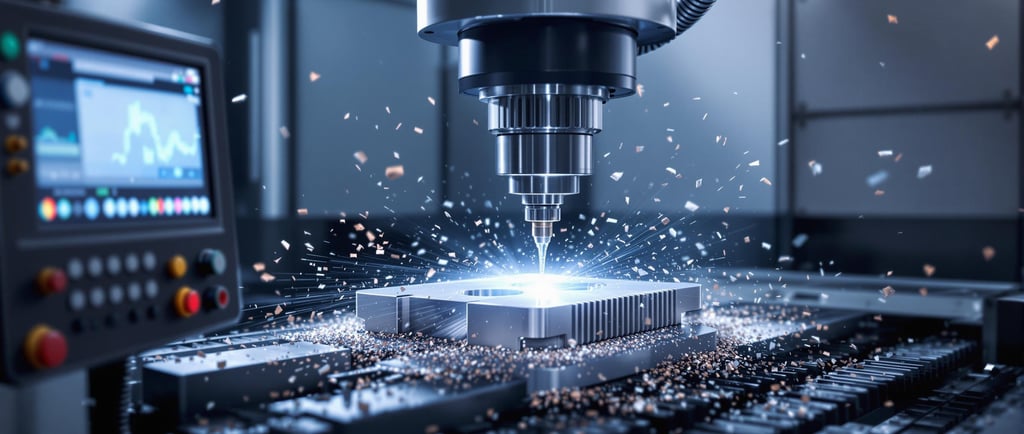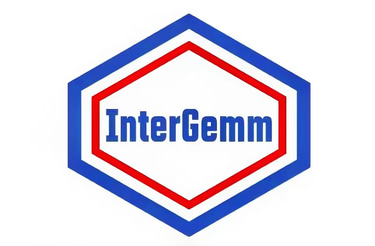What Is CNC Machining? A Beginner’s Guide
Learn what CNC machining is and how it works. This beginner’s guide explains CNC processes, materials, and benefits for modern manufacturing.
5/10/20252 min read


In today’s advanced manufacturing world, CNC machining has become a cornerstone of precision and scalability. But what exactly is CNC machining, and why does it matter?
In this beginner’s guide, we’ll explain the basics, benefits, and applications of CNC technology — and how companies like InterGemm use it to deliver smart, efficient, AI-powered manufacturing solutions.
🔧 What Does CNC Stand For?
CNC stands for Computer Numerical Control. It refers to the automated control of machining tools by a computer, based on a pre-programmed sequence of commands.
Instead of relying on manual operation, CNC machines use software (such as G-code) to cut, drill, mill, engrave, or shape raw materials into precise components.
🛠️ How CNC Machining Works
The CNC machining process follows a digital workflow:
Design Phase: Engineers create a CAD (Computer-Aided Design) model.
CAM Programming: The design is converted into instructions using CAM (Computer-Aided Manufacturing) software.
Machine Setup: Material is loaded, and the program is transferred to the CNC machine.
Automated Machining: The CNC machine executes the commands, moving tools with precision to shape the material.
⚙️ Types of CNC Machining Processes
CNC Milling: Removes material using rotary cutters. Ideal for complex 3D shapes.
CNC Turning: Rotates the part while a cutting tool removes material. Great for cylindrical components.
CNC Drilling: Creates precise holes and threading.
CNC Engraving: Used for part numbers, logos, or decorative detailing.
🧱 Materials Commonly Used in CNC Machining
CNC machines can handle a wide range of materials, including:
Aluminum
Stainless Steel
Brass
Copper
Plastics (ABS, Nylon, Delrin)
Titanium
Each material requires different speeds, feeds, and toolpaths — which AI-powered systems can optimize in real time.
✅ Why CNC Machining Is Critical for Modern Manufacturing
Here’s why CNC is so important:
Precision: Tolerances as low as ±0.01 mm
Repeatability: Ideal for high-volume production
Speed: Fast turnaround with minimal human error
Flexibility: Supports everything from prototypes to mass production
AI Integration: InterGemm uses AI to streamline quoting, toolpaths, and process optimization
🏭 Real-World CNC Applications
CNC machining is used in industries like:
Aerospace (engine brackets, panels)
Automotive (transmission parts, suspension)
Medical (implants, surgical tools)
Electronics (heat sinks, housings)
Defense (custom mechanical parts)
At InterGemm, we combine this technology with AI to deliver smart manufacturing at scale.
📞 Ready to Get a Quote?
If you're looking for expert CNC machining with unbeatable accuracy and turnaround, Request a quote now → from InterGemm or explore our CNC services to learn more.
📌 Final Thoughts
We hope this beginner’s guide helped explain CNC machining in simple terms. Whether you’re a first-time buyer or an experienced engineer, knowing how CNC works can help you make better sourcing decisions — and we’re here to help.
Solutions
Precision laser services powered by AI automation.
Innovative
Trusted
sales@intergemm.com
+1-980-499-5783
© 2025 InterGemm. All rights reserved.
1515 Mockingbird Ln, Suite 420, Charlotte, NC 28209
Ethical AI. Verified Cybersecurity.
👉 Explore our AI & Cybersecurity Policy


